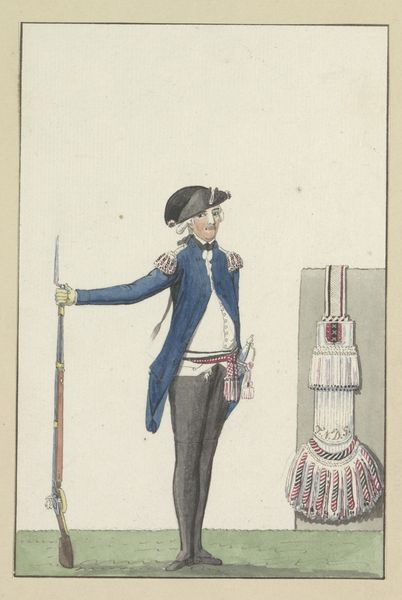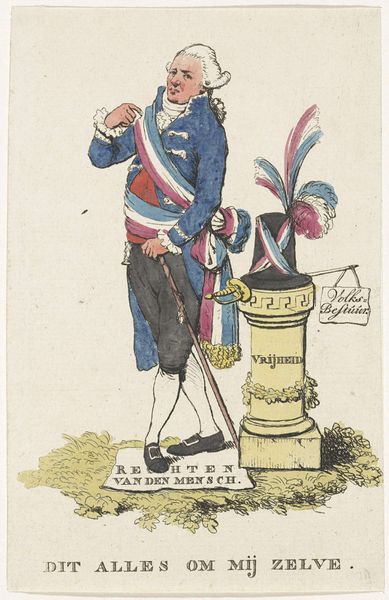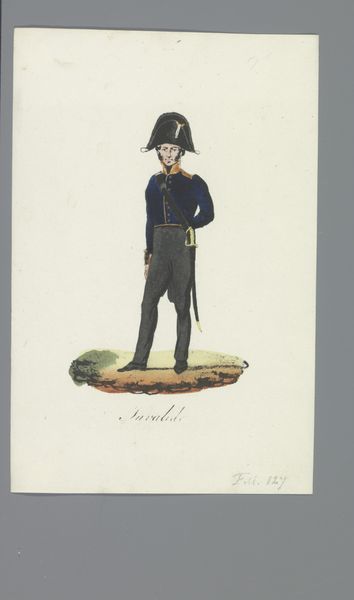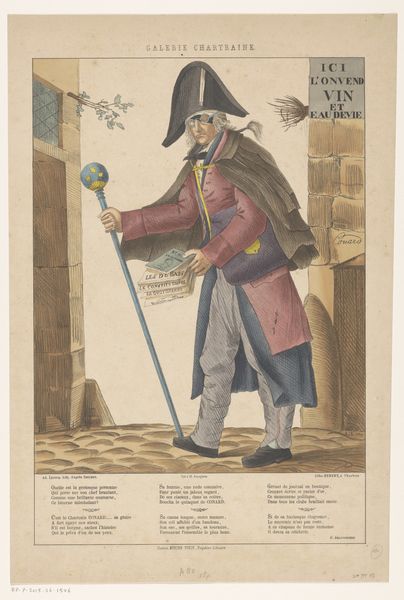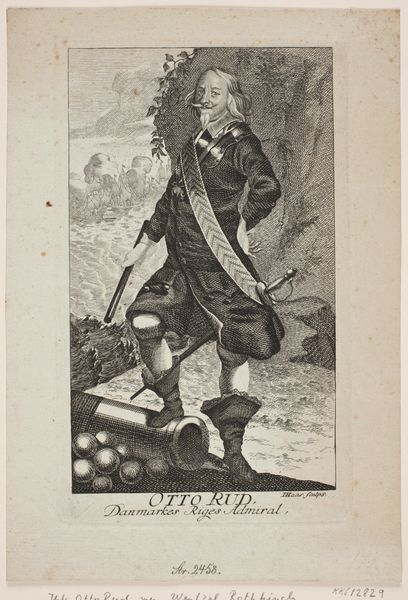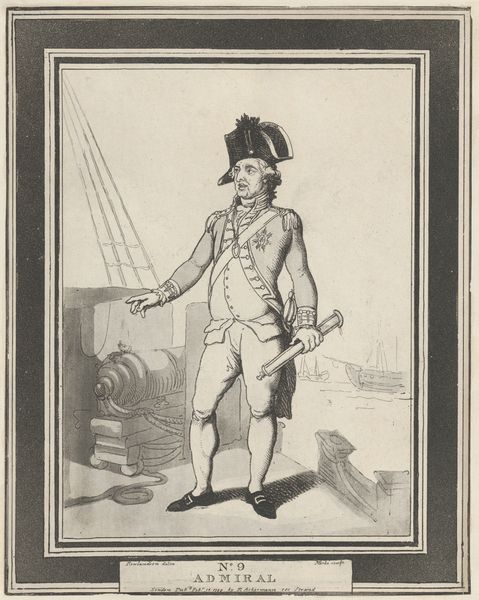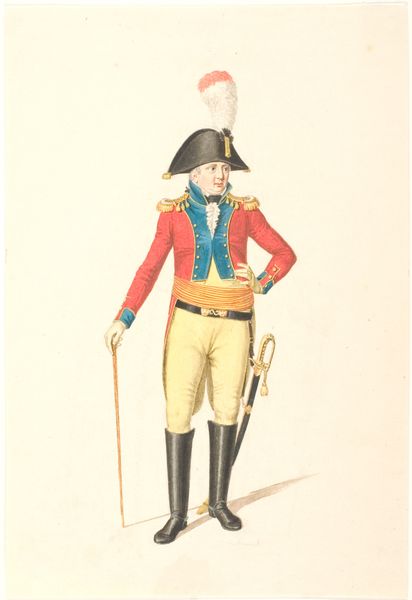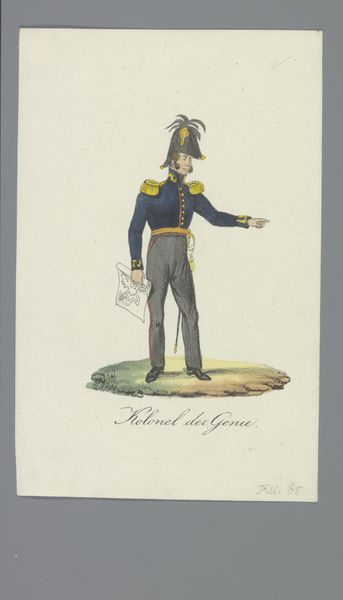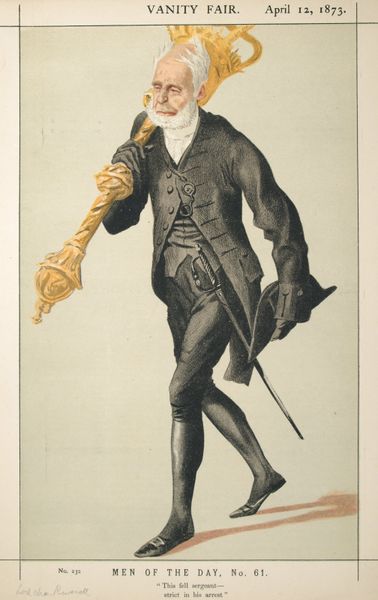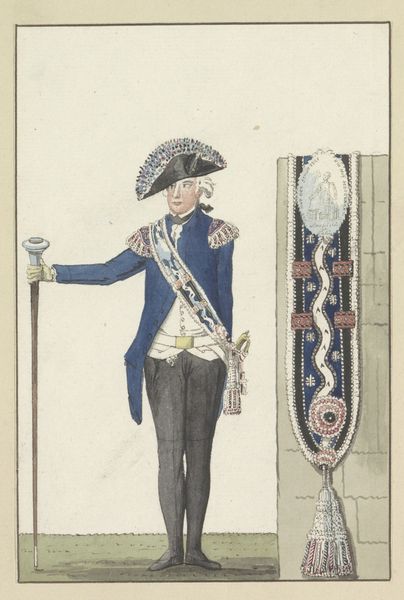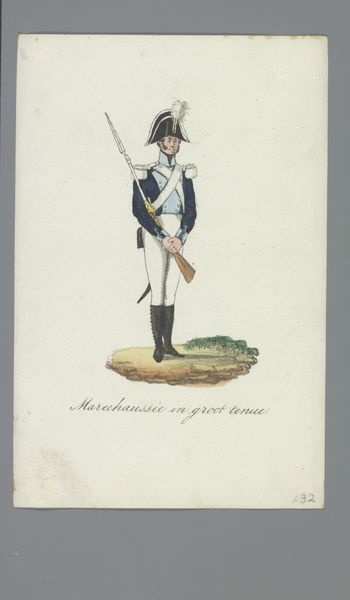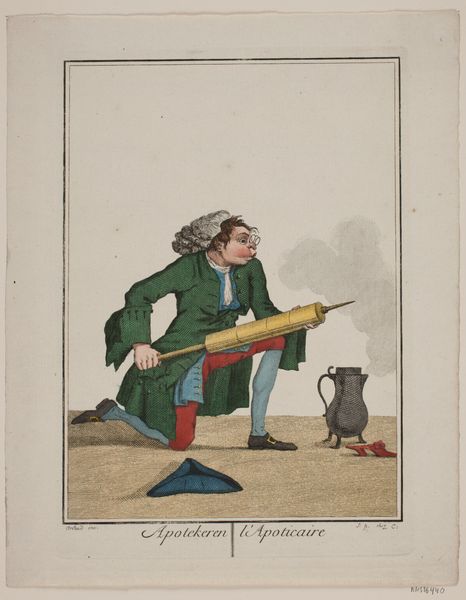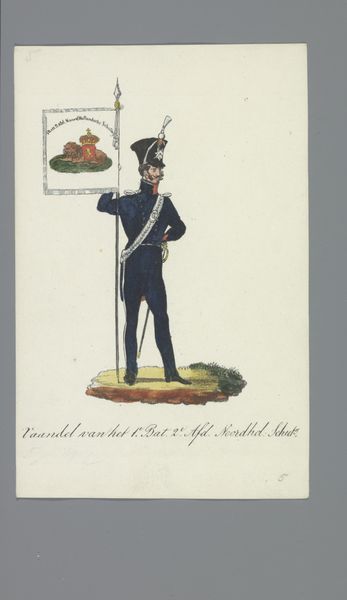
painting, print, watercolor
#
water colours
#
narrative-art
#
painting
# print
#
caricature
#
watercolor
#
romanticism
#
genre-painting
Dimensions: 350 mm (height) x 253 mm (width) (bladmaal)
Curator: Here we have "Den Virksomste af de 3000 Verier," or, translated, "The most active of the 3000 Worlds" created in 1807 by Gerhard Ludvig Lahde, a work currently held at the Statens Museum for Kunst. The piece employs watercolors, print techniques, and, rather unusually, fuses both Romantic and caricature styles, wouldn’t you agree? Editor: Absolutely. It's chaos, isn't it? Controlled chaos. I immediately see the material weight of social critique—a burning building rendered with precise lines, the devilish figure of authority sporting a ridiculously ornate hat... it speaks of a very physical, and I suspect unequal, distribution of power. Curator: Indeed. He's a striking character. Part military officer, part mythical beast... he is armed with a brush and other tools that are maybe signs of devastation... quite symbolic of authority. There’s also an unsettling element here, the way Lahde's humour seems to border on the macabre. The watercolor gives the whole scene an almost translucent fragility. Editor: Which amplifies the satirical jab! Lahde understood his materials, that’s plain to see. He knew watercolor wouldn's carry the same weight as oil paints in conveying permanence. So, he uses its delicate nature to emphasize the disposability of authority, the ephemerality of power in times of upheaval. It is interesting how this satirical print is more romanticist than, let's say, realistic. Curator: Exactly. It pulls you in. The burning structure and menacing figure is almost inviting, yet foreboding... the detail and bright color washes, along with a simple line that delineates the narrative creates a beautiful dream, but more of a nightmare. I wonder if Lahde saw himself as some sort of divine arbiter using beauty to expose social injustices. Editor: Well, consider the printing process, though. The availability of prints allowed for broad circulation—a dissemination of ideas and dissent that was only possible because of these specific materials and production techniques. Curator: Which adds to the weight of its message today. As a historical artifact, and social document, "The Most Active…" reminds us that artistic intention doesn't exist in a vacuum. I always discover more than intended when I explore such work. Editor: It certainly speaks to the importance of recognizing the physical processes behind art as crucial for our deeper understanding and appreciation. In fact, I will reflect on this next time I light the barbeque!
Comments
No comments
Be the first to comment and join the conversation on the ultimate creative platform.
